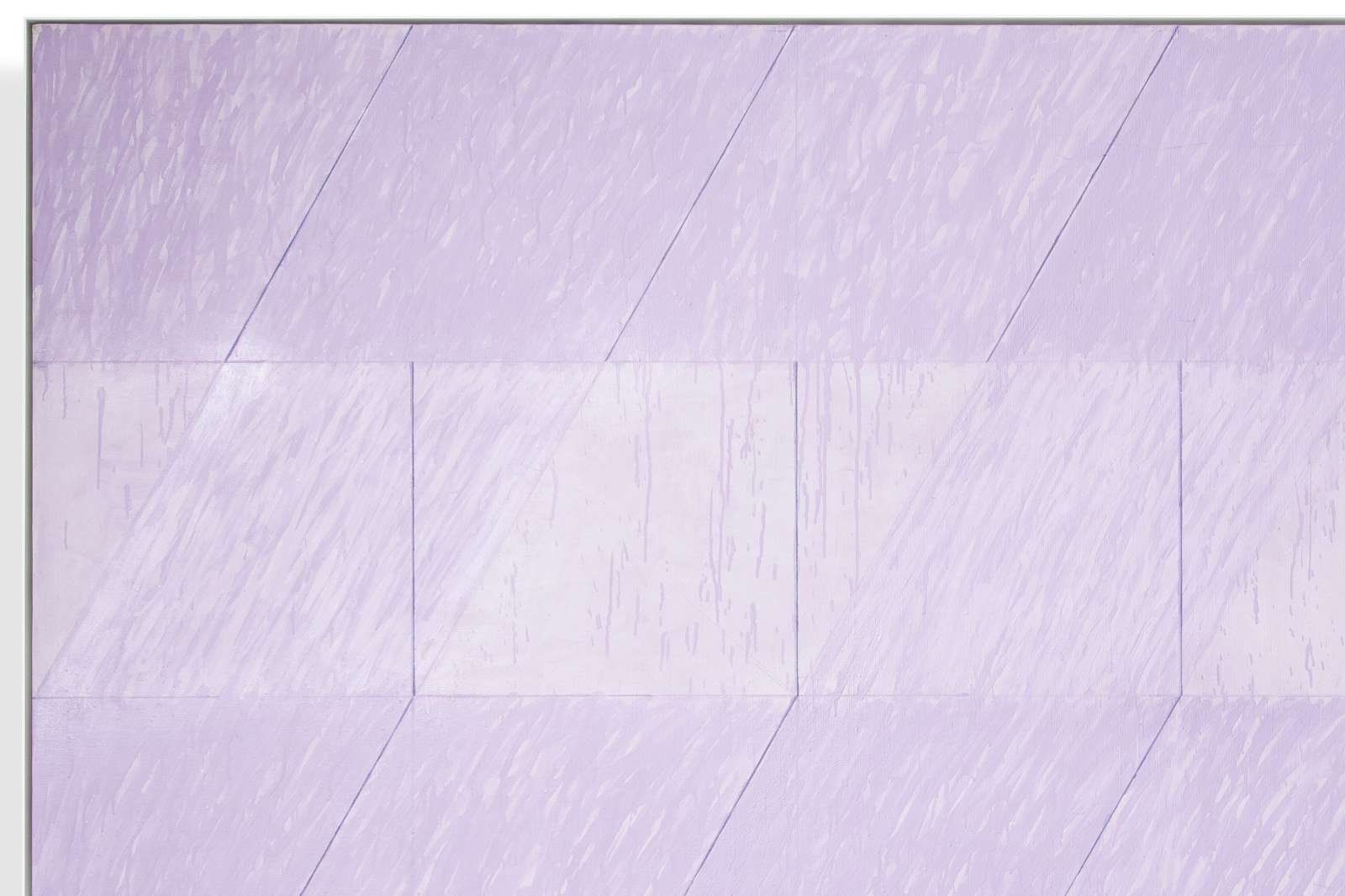Jack Tworkov
Q3-71 #4, 1971
Oil on canvas
Second Floor, Patricia Lipoma Kraft and Jonathan A. Kraft Hall for Social Sciences
Gift of the Estate of Jack Tworkov
Jack Tworkov was an influential painter and educator associated with the generation of avant-garde artists who established Abstract Expressionism, also known as the New York School. His early paintings feature solid blocks of color in thickly applied layers that can be characterized as gesturally abstract. His mature works, including Q3-71 #4, adopt a more formal sense of geometric rigor, featuring diaphanous layers of color over underlying structural grids, thereby creating depth and feeling through tone and form. This large-scale painting is characteristic of the artist’s late style, featuring delicate veils of lavender overlaying a mathematically calculated grid, conveying both sensual tenderness and analytical strength.
Q3-71 #4 was created in 1971, the year Tworkov visited Rice University. One of the few artists invited by John and Dominique de Menil to attend the opening of the Rothko Chapel in Houston, Tworkov dined at the faculty club on campus and visited the Rice Museum where he saw Some American History, an exhibition organized by the artist Larry Rivers. In 1976, Tworkov’s work was exhibited at Rice University as part of a traveling group exhibition, Drawing Today in New York, presented in Sewell Hall. More than five decades later, Tworkov’s works as a painter and an educator are important precursors for new generations of artists exploring geometric abstraction today.
About the Artist: Jack Tworkov (b. 1900, Biala Podlaska, Poland, d. 1982, Provincetown, MA) emigrated to the United States in 1913, then studied English literature at Columbia University and art at the National Academy of Design and the Art Students League. In 1934, he joined the Federal Art Project of the Works Progress Administration where he met fellow artists Willem de Kooning and Mark Rothko, among others. In 1949, he became a founding member of the Eighth Street Club, a group of artists in lower Manhattan who met regularly to explore theories of abstraction.
Tworkov lectured and taught at a variety of institutions throughout his career, most notably at Yale University where he served as chair of the art department from 1963-1969. His collected writings can be found in a volume titled The Extreme of the Middle (Yale University Press, 2009) and his catalogue raisonné can be found online at https://www.tworkovcatalogue.com.
The 1970s, the decade that produced Q3-71 #4, was an important period for Tworkov, bringing a John Solomon Guggenheim award (1970), a solo exhibition at the Whitney Museum of American Art (1971), the Skowhegan Medal for Painting (1974), and a career survey at the Third Eye Centre, Glasgow (1979) that toured the United Kingdom. The last solo exhibition of his work during his lifetime was mounted at the Solomon R. Guggenheim Museum in New York in 1982. Tworkov’s works are held today in numerous permanent collections including the Metropolitan Museum of Art, New York; Museum of Modern Art, New York; Smithsonian American Art Museum, Washington, DC; Solomon R. Guggenheim Museum, New York; Tate Modern, London; Whitney Museum of American Art, New York; and Yale University Art Gallery, New Haven, among others.





